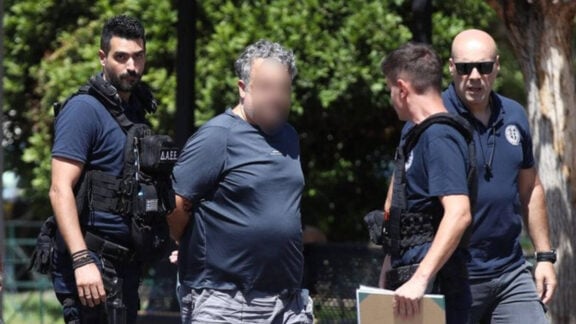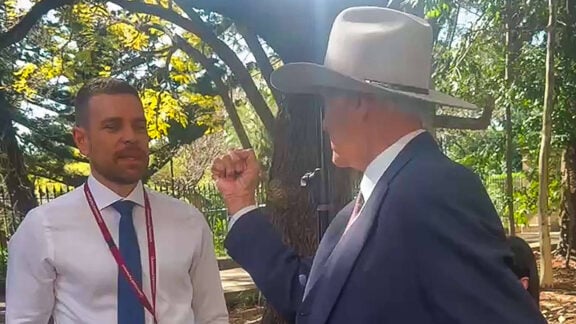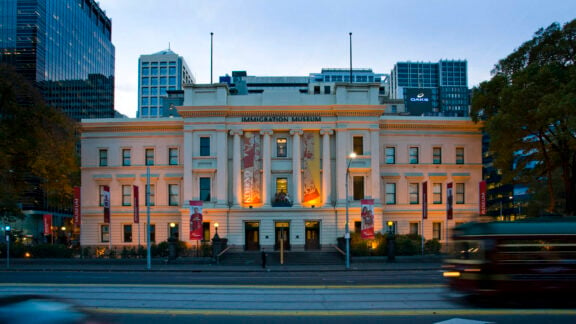The story of the brutal Axis occupation of Europe and the Resistance to it is an essential aspect of the history of the Second World War. The Occupation is part of the living memory of many of Australia’s surviving Greek community. It is a terrible experience that lives on in the stories passed down to their children and wider families.
This monumental new book – nearly 1,000 pages – by the renowned European historian Halik Kochanski will be a welcome addition to the literature documenting the history of the Resistance throughout Europe, including Greece. There have been many memoirs and histories of the Resistance – from individual stories of Resistance fighters and their supporters to the works of historians who have endeavoured to gather a history of the Resistance from these accounts and other records. These form studies of resistance movements in various countries, such as France, Holland, Denmark, Italy and Germany.
Most recently, I read Olivier Wieviorka’s masterful The French Resistance, newly translated from the French. There is Claudio Pavone’s A Civil War, an over 700-page history of the Italian Resistance. There are Europe-wide histories ranging from M.R.D. Foot’s classic record, titled Resistance, draws on his extensive research as the official historian of the SOE, the Allied military effort to support the Resistance, or, more recently, Max Hastings’ The Secret War.

Those researching the story of the Resistance in Greece would have no doubt read Mark Mazower’s Inside Hitler’s Greece, a significant part of which is the Resistance to the Axis Occupation or Antony Beevor’s Crete – The Battle and the Resistance. For intimate accounts, we have the famous account of George Psychoundakis’ The Cretan Runner and the excellent anthology of Greek Australian resistance participants, All that Grief – Migrant Recollections of Greek Resistance to Fascism, compiled by Allan and Wendy Scarfe.
Apart from these critical works, my own journey into the story of the Greek Resistance began many years ago when I was urged to read Dominique Eudes’ The Kapetanios, through Stefanos Sarafis’ memoir ELAS – Greek Resistance Army and Dionisis Haritopoulos’ Aris – The Lord of the Mountains, to having the privilege to record the wartime recollections of Ms Voula Pierakou-Vounelakis, a member of the Resistance in Kalamata and the Peloponnese.
Kochanski creates a new benchmark in the European-wide history of the Resistance, providing essential insights into the individual national resistance movements. She places their formation, activities and achievements in a crucial comparative context. Her book is extensively researched, drawing on an impressive list of primary and secondary sources.
The magisterial nature of her work should come as no surprise as she is the author of The Eagle Unbowed – Poland and the Poles in the Second World War, her over 700-page comprehensive study of Poland in WWII, including the Resistance.
Her new study is divided into three parts – why resist, growing the Resistance, and Resistance in action. While the book covers Europe, this review will focus on her comments on the Resistance in Greece and her comparative insights.

She points out that the Resistance occurred all over Europe, but its nature was directly related to the heart of the Occupation. Where the Occupation was relatively “light”, the Resistance was slower to take hold.
Conversely, the brutal nature of the German Occupation of Poland meant that acts of Resistance occurred almost from the first days of the war. In many countries, the rise of the Resistance is related to the changing and increasingly harsh imposts of the Occupation.
This underpins the domestic nature of the development of the Resistance. While the Allies often aided them – with the British Special Operations Executive (SOE) the most prominent in this regard with its aim of “setting Europe ablaze” – the Resistance grew and was sustained by its domestic environment. Concerning Greece, Kochanski cites some evidence of the domestic sources of Resistance. She notes that local people actively assisted Allied soldiers on the run as the Occupation began in May 1941.
In early 1943, despite unemployment and famine, the promotion of labour “recruitment” to relatively well-paid work in Germany, firstly voluntarily and then through compulsory registration, resulted in massive public protests. Initially spontaneous, these were soon coordinated by the vital resistance movement EAM, with protestors and strikers confronting German forces and their collaborationist supporters on the streets. This not only led to replacing the then collaborationist Prime Minister with the more pro-German Rallis regime but failed, with less than 2,500 Greeks registering throughout 1943.
The Resistance would grow until the occupier effectively abandoned large areas of Greece. She discusses the politics of the Resistance. In Greece, the legacy of the various interventions of the Greek monarchy in politics – and its support for the Metaxas’ regime – saw the Resistance dominated by republican sentiment. Similar to most European countries, the communist and broader left movements were soon prominent in the leadership of the leading resistance organisations, such as EAM and its armed wing ELAS, with others mainly led by those of republican or nationalist sentiment (such as EDES on the mainland and EOK on Crete).

This resulted in a complicated relationship between the domestic Resistance and the Allied command.
While the end of the Occupation would soon bring civil war to Greece, during the war, the Allies could not but recognize and support EAM and ELAS, the significant force actively opposing the Axis occupation. She describes the various military operations undertaken by the Resistance, many in cooperation with SOE liaison agents, from the destruction of key bridges, roads, telephone exchanges and other military targets.
All the evidence suggests that most of these were carried out by ELAS. However, despite these successes, the costs were high. Records reveal that between autumn 1943 and June 1944, some 1,100 German soldiers were killed in these actions.
But resistance casualties were far higher, especially in the terrible reprisals and the wholesale destruction of villages and their people, such as those at Kommeno, Distomo and Kalavrita.
In fact, one German unit alone was responsible for destroying nearly 200 villages and the murder of approximately 2,000 villagers. The book includes much discussion on the evolution of the political and military situation as the German Occupation ended, with the British intention of supporting the return of the monarchy and the disarming of the Resistance becoming increasingly apparent. The Greek military mutinies in Egypt against the return of the monarchy and their violent repression are also discussed.
The end of the war would see few former collaborators punished, with many who served alongside the occupier now engaged by the new government in hunting down those who had resisted. She concludes that the military impact of the Resistance did assist the Allied liberation of Europe, principally through the disruption of enemy communications. Yet it also played a vital role in intelligence gathering, informing the Allied military forces of enemy dispositions and movements.
Much of this was essential to the outcome of the war. In this, she discusses several little-known intelligence-gathering resistance groupings based in the cities and ports of Greece, most outside the prominent resistance organisations. Those highlighted include those led by Lela Karagianni, Rigas Rigopoulos, Panagiotis Lykourezos and Ioannis Peltekis. She estimates that the information supplied by such groups led to the sinking of hundreds of Axis military shipping, directly undermining the enemy’s military operations.
Reflections on the Resistance to Axis occupation necessarily pose personal questions for the reader. What would I have done in such a situation? One hopes that one would have acted as these brave and often lonely individuals and groups did.

But as Kochanski writes, the reality is that the active Resistance was a small proportion of the populations of occupied countries, supported by a wider group but still nevertheless a minority. Most individuals, faced with the reality of Occupation, often witnessing terrible reprisals, retreated from the public space and sought to survive.
Others took the line of collaboration, seeking the benefits of Occupation, often at the expense of their fellow compatriots, either actively serving alongside the occupier or supporting them in other ways. This reality makes the activities and achievements of the Resistance all the more heroic and worthy of commemoration. She concludes with the words of one resistance fighter who wrote that by their actions, the Resistance’s refusal to accept a German victory meant they could look the Allied soldiers in the eye without blushing. They had borne witness to opposing the occupier. And that is not a small thing.
Halik Kochanski’s Resistance: The Underground War in Europe, 1939-1945, is published by Penguin and available in all good bookstores.
Jim Claven is a trained historian, published author and freelance writer. He authored three books on the Hellenic link to Australia’s Anzac tradition – Lemnos & Gallipoli Revealed, Grecian Adventure and the forthcoming From Imbros Over the Sea. He thanks Lela Soublis for her assistance in interviewing Voula Pierakou-Vounelakis. He can be contacted via email at jimclaven@yahoo.com.au.








